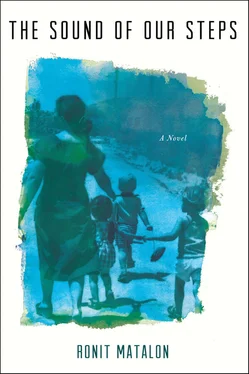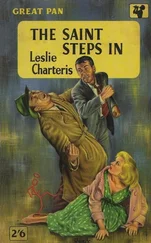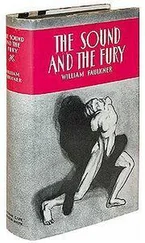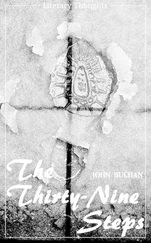A PORTRAIT OF SAMMY FRIGHTENING HIMSELF
ONE OF HIS eyes, the left one, is half shut, squinting anxiously and suspiciously at the other eye. His left leg limps a little in the wake of the eye, it, too, at a squint, nobody knows why. When he tells a story, to himself or others, he always exaggerates, crashing cymbals like the guy in the firemen’s band. “Take a quarter of what he says and throw three-quarters out,” says the mother, but she doesn’t take her own advice, she listens to him wide-eyed until she catches herself and brings the two of them back to the dryness of the straight and narrow. “Stop with that nonsense of yours,” she scolds, but not seriously, only as a reminder of the secret code agreed between them, which is also connected to the obscure dance about money: at least half of what he earns as an apprentice welder he spends on toys for the child; she condemns the waste, but turns a blind eye and still gives him money. He spends money on toys for himself as well, but not much, he invents things: he stays in the welding shop for hours after work, collecting scraps, old parts, and builds a tall circus bicycle of the kind he has long coveted — one giant wheel and behind it a little one. The first ride on this bicycle was also the last: he rode all the way from the welding shop in Petach Tikva to the neighborhood, about six miles, turned his head to look through the windows of a bus at the astonished passengers, and crashed. After that he built a joint bicycle for himself and his friends, welding five bicycles together in the backyard into a snake of a cycle that did very well on a straight path but collapsed and came crashing down on the bend in the road to “up there,” throwing the happy riders off to the side of the road. And there was the bowling arcade he tried to construct behind the shack, then the huge electronic board with switches to calculate the multiplication tables, which he presented to the child’s kindergarten (on the day of the presentation the teacher refrained from pulling the child’s ear), and after that the reading machine, his tour de force, the most detailed and precise realization of his dream of idleness, the great sleep, life in bed, for which he never stopped pining. The reading machine was a rod that rose and fell, to which he welded a huge board with a tray at the bottom, and tubes dangling from its right and left sides: the person lying in bed could keep his hands under the covers, while the machine turned the pages for him; he held one of the tubes, one for drinking and one for smoking, in his mouth. The truth is that Sammy hardly ever read, in bed or anywhere else, but the machine united two fantasies: the fantasy of total rest and the fantasy of reading. He did read to the child from the animal book he had bought for himself, but only the first three lines, after which he tired and began to invent.
They lay side by side on the sofa bed in the yellow hallway, the clumsy machine almost squatting on their chests. On the board in front of them the book opened to the page about the lion, which was his favorite. From time to time Sammy paused in his story to suck sweet raspberry juice from the tube, red and dense as blood. “The lion is the king of the animals,” he began to read wearily, in the tone of an insurance company brochure, and immediately abandoned the text. “And he followed me all the time, he kept after me with his teeth at my throat, but he didn’t stick them in, whenever I moved I felt the points of his teeth on my throat and I was afraid to move, but if I stood still he would have gone for me, that’s all he was waiting for, to tear me open and rip out a chunk of my butt,” his voice rose and fell, dropping to a whisper that sent shivers through his body. Beneath the covers the child felt the shiver, and she, too, shivered. “What happened then?” she whispered. He closed his eyes, half asleep. “If you finish the yogurt I’ll tell you.” She didn’t finish it, not before the reading machine and not after it, for hours she stirred it with a teaspoon, held the white stuff in her mouth, and spat it out in the sink behind Sammy’s back. After that they got up and went to Levy’s shop: a back room in his shack where he sold candy, building materials, pens and pencils, toilet paper, stockings, and toys. There was only one bit of floor clear of dusty goods to stand on in Levy’s shop. And they stood on it. The child raised her eyes to the high shelves, to the dolls dressed in crimson brocade or faded blue, staring with dead glassy eyes from the top of cardboard boxes, pointed at them, and said: “That one, that one, and that one.”
THEY LAY SIDE BY SIDE IN THE YELLOW HALLWAY
THEY LAY SIDE by side in the yellow hallway, which was yellow even when it wasn’t and was defined by its changing yellowness — sometimes lemony and sometimes ripe egg-yolk yellow, falling to the floor from the point where the walls met the ceiling, so uniform in appearance as to look like another wall of yellowness. Sammy spoke into the yellowness, putting words in the air that bumped into each other aimlessly, merged in the yellowness that was not their lives but also was their lives. This is what the child thought, not in words but in the space that was love, in the absence of expectation, in the permission she had been given to drift, to pay no attention, to be aimless, which was love. And within the sheets or waterfalls of yellow, the child left Sammy precisely because he stayed, precisely because of the free-floating love and the fact that he stayed, the child left and drifted, she left Sammy and his story and went somewhere else, to a place where nothing fell from the point where the wall met the ceiling, to a place where one solid wall met another solid wall and the endless yellow of the hallway came to an end, turned into the little passage leading to the toilet, where there was a picture hanging on the wall that called to her again and again, precisely because of its mysterious silence, which, she felt, kept out the pouring yellow, blinding in its golden brightness. The picture, unlike the pouring yellow, did not say, “me, me,” but “you, you.”
She turned on her side, turning her back to Sammy, who didn’t notice that she had turned her back to him, because this was the only way she could see the picture the way she wanted to see it, from the side and not head-on, looking in a way that both avoided it and dared to steal the sight — only this way was it possible to see the picture exactly as she had seen it the time before, with the same deep, dark, seething feeling that rose up in her but did not overflow because it stayed contained in the people in the picture, a murky promise. The longer the child looked, only from the side and with one eye open because the other one was squashed into the pillow, the more the wonder grew inside her, a sense of enormous oppression and enormous awakening at the same time; the weight of the oppression did not cancel out the awakening but magnified it, propelled her forward toward the picture and the three people in it, in whose presence there was something inexplicable and but also feverish, especially in the young woman in the white dress, sitting with her back to the other two, leaning against the wrought-iron railing of the balcony and looking straight ahead with blazing black eyes, dense with a fierce, glowing blackness whose gaze seemed to covet nothing at all in what it had settled on, nothing but the contemplation itself.
THE PICTURE: LE BALCON (1)
SHE COULDN’T PUT the toilet and the bathroom anywhere else because of the plumbing, so the rooms changed around them in an ever-shifting pattern like nervous dogs, maddened by the inexplicable immobility of a scarecrow. In the endless rearrangement of the shack, the toilet and the bathroom and the passage leading to them were the one constant element: she contented herself with changing the ceramic tiles three or four times and exchanging the plastic shower curtain for sliding doors and the reverse. The picture was the right size for the wall of the little passage and so it remained where it was: a reproduction of Le Balcon by Édouard Manet. There was no lighting in the passage, and most of the time the picture remained shrouded in darkness, fitfully illuminated when someone switched on the light in the bathroom or the toilet or when a ray of light from the yellow hallway suddenly revealed it.
Читать дальше












